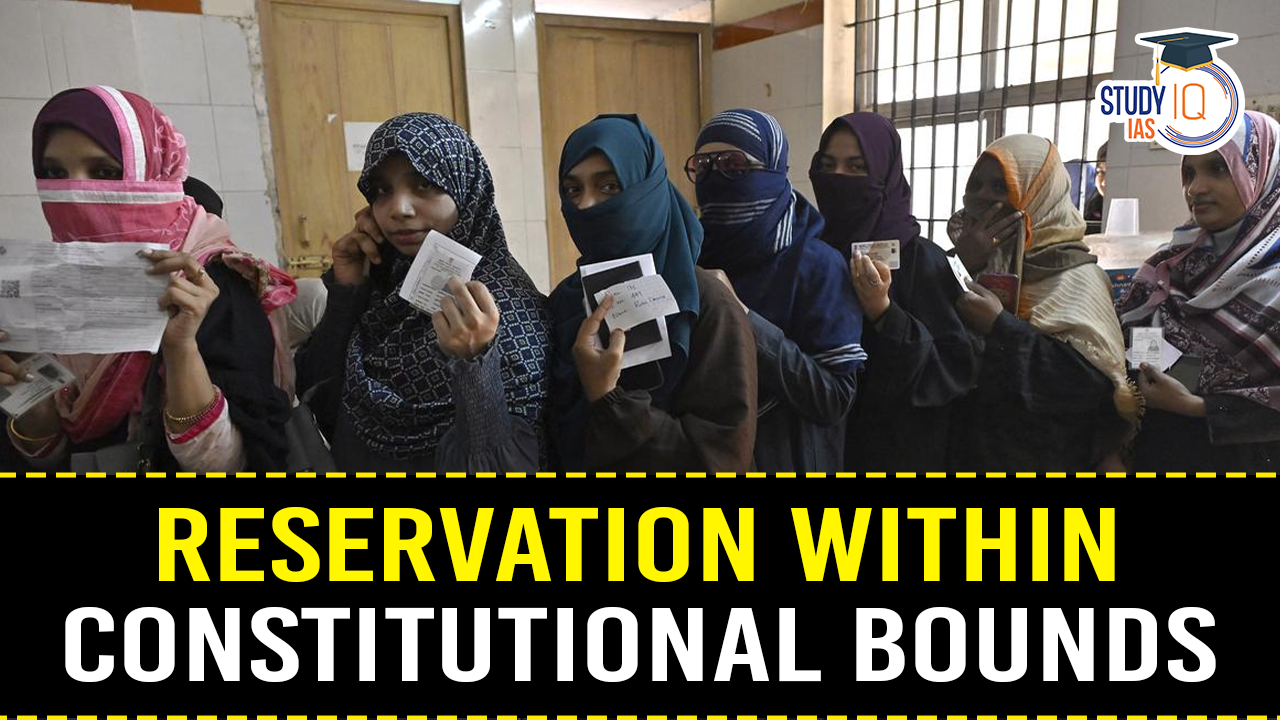Table of Contents
Context: Political conflict has erupted over reservation policy.
Constitutional Basis of Affirmative Action for Reservation
- Social Justice and Equality: The Indian Constitution seeks social justice alongside equality (Articles 15 & 16) but allows the state to make special provisions for the advancement of OBCs, SCs, and STs.
- OBC Definition: OBC stands for Other Backward Classes, encompassing socially and educationally disadvantaged castes.
- Some states further define MBCs (Most Backward Classes).
- Reservation Caps: The Supreme Court upheld 27% OBC reservation in the Indra Sawhney case (1992) and established a 50% cap for total reservations to maintain equality unless exceptional circumstances exist.
- Current reservations are: OBC (27%), SC (15%), ST (7.5%) = 49.5%.
- EWS Reservation: Economic criteria alone can also be the reservation basis, as per the Janhit Abhiyan case (2022) which upheld reservations for Economically Weaker Sections (EWS).
- Creamy Layer: OBCs have a creamy layer exclusion based on income (currently ₹8 lakhs per annum).
Important Developments with respect to Reservation
Affirmative Action in Other Countries
- S.: Affirmative action specifically targets racial minorities, but is currently under scrutiny by the Supreme Court (Fair Admissions vs Harvard case).
- K.: Positive action is voluntary and helps employers address under-representation.
- France: Measures focus on opportunities for low-income students, not race or ethnicity.
Current Debate on Reservation
- Historical Context: The Constituent Assembly was opposed to reservations based solely on religion, adhering to the principle of non-discrimination based on religion as outlined in Articles 15 and 16 of the Constitution.
- Reservations in Karnataka: Since 1995, Karnataka has included sub-categories for Muslims within the OBC quota. The H.D. Deve Gowda government initially introduced this 4% sub-categorization, which was later removed by Basavaraj Bommai’s government and redistributed among Hindu OBCs. Following a court’s intervention, the original status was maintained.
- Broader Application: In states like Kerala, Tamil Nadu, and Andhra Pradesh, sub-categorization within the OBC/MBC quota also includes Muslim communities, reflecting the constitutional category of ‘socially and educationally backward classes’ that encompasses all religions.
- Scheduled Castes Specificity: The Constitution (Scheduled Castes) Order, 1950, specifies that only those professing Hinduism, Sikhism, or Buddhism can be considered members of Scheduled Castes, a restriction not applied to Scheduled Tribes.
- Congress’s Reservation Stance: The Congress party has pledged to work towards removing the 50% cap on reservations to expand the scope of affirmative action.
The Way Forward
- Rohini Commission: Established to evaluate sub-categorization among OBCs, it found that a significant majority of benefits have been acquired by a small fraction of the OBC castes/sub-castes, with many communities having no representation in jobs or educational institutions.
- State vs. Central Implementation: While sub-categorization has been implemented in 11 states, it has not been adopted at the national level.
- Creamy Layer in SC/ST: Unlike the OBC category, there is no creamy layer exclusion for SC and ST communities, leading to a concentration of reservation benefits.
- Dalit Christians and Muslims: These groups face substantial discrimination and lack opportunities.
- A commission led by former CJI K.G. Balakrishnan is reviewing the possibility of extending SC reservation benefits to Dalits who convert to religions other than Sikhism and Buddhism.
- Policy Considerations: Proposals include increasing the reservation cap beyond 50%, introducing creamy layer criteria for SC and ST, and extending SC reservations to include Dalit Christians and Muslims.
- These are sensitive issues requiring careful deliberation to ensure that reservation benefits reach the most marginalised sections while maintaining a balance with the equality principles enshrined in the Constitution.


 Bharat Bandh 9 July 2025: Over 25 Crore ...
Bharat Bandh 9 July 2025: Over 25 Crore ...
 Sukhoi Su-57: Will India Choose Russia�...
Sukhoi Su-57: Will India Choose Russia�...
 World Bioproduct Day 2025: Date, Theme, ...
World Bioproduct Day 2025: Date, Theme, ...





















